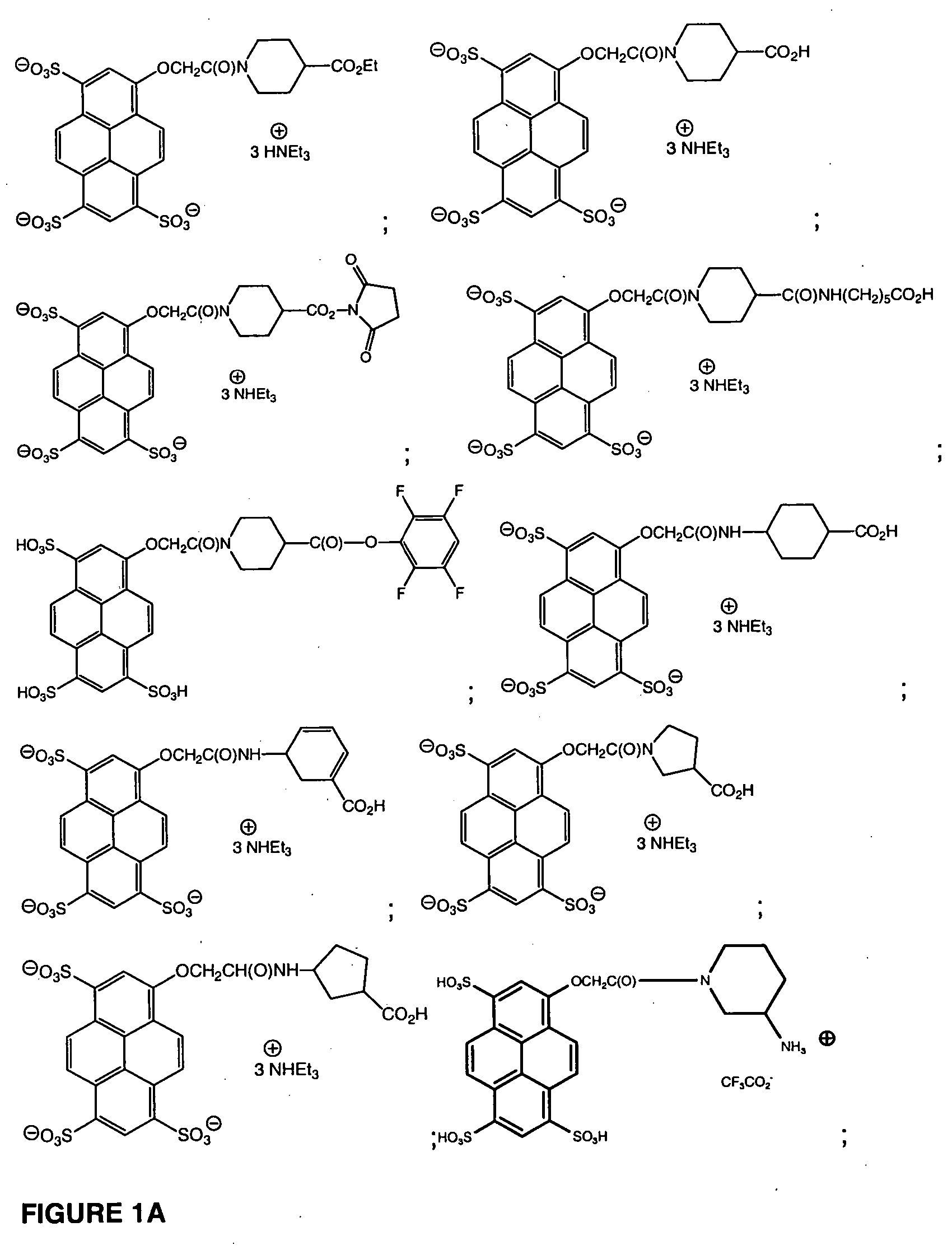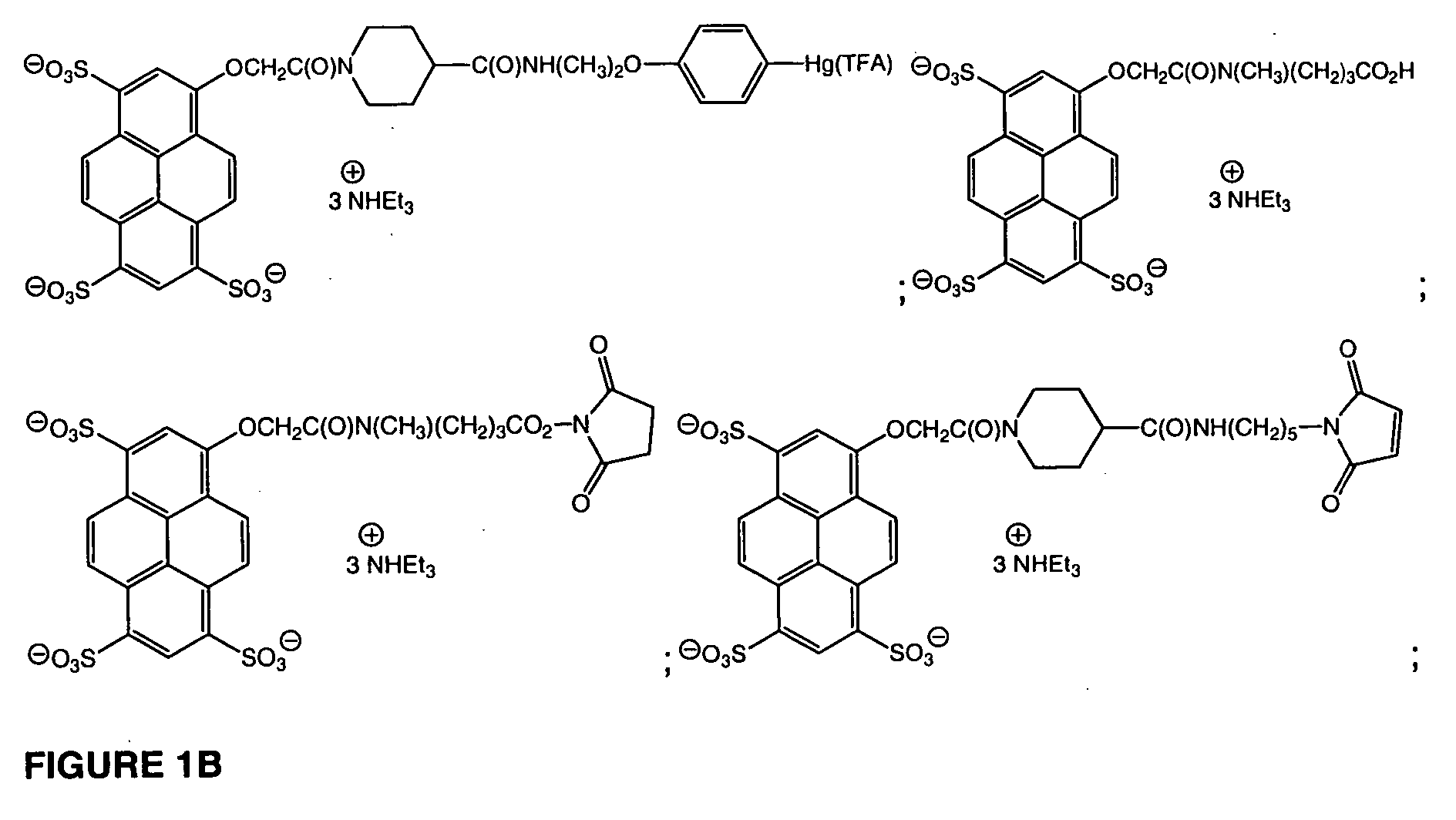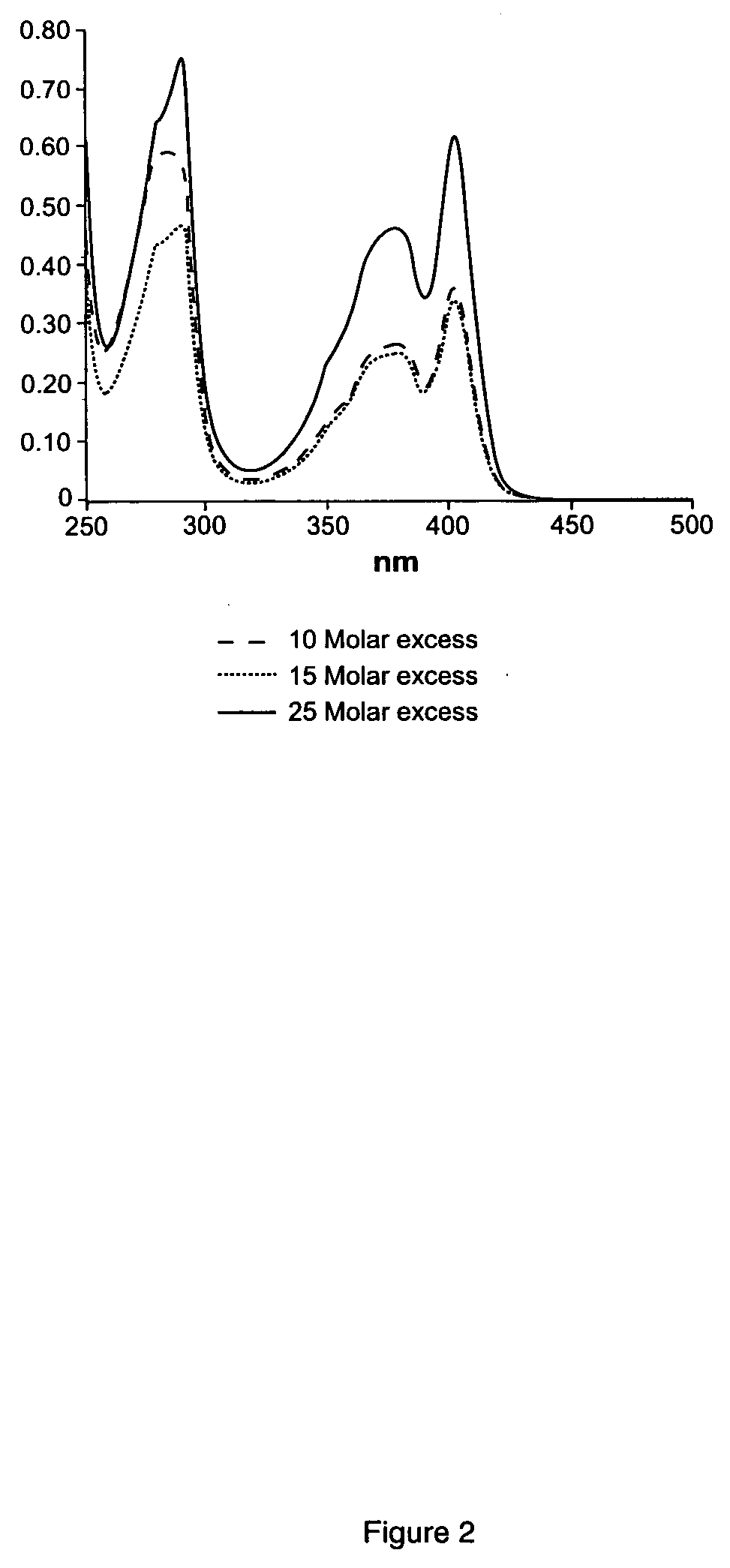Pyrenyloxysulfonic acid fluorescent agents
a technology of pyrenyloxysulfonic acid and fluorescent agents, applied in the field of new materials, can solve problems such as cell injury or death, and achieve the effects of low background fluorescence, high absorption efficiency, and high quantum yield
- Summary
- Abstract
- Description
- Claims
- Application Information
AI Technical Summary
Benefits of technology
Problems solved by technology
Method used
Image
Examples
example 1
[0195] To a solution of 1,3,6-tris-sulfo-8-pyrenyloxyacetic acid, trisodium salt (2.19 g, 3.76 mmol) in E-pure water (200 mL) was added DOWEX-50W triethylammonium form (25 g) and the mixture was stirred at room temperature for 20 min. DOWEX-50W was filtered off and washed with E-pure water. The filtrate was concentrated and lyophilized.
[0196] The residue was dissolved in anhydrous DMA (100 mL), DCC (2.3 g, 11.28 mmol) and HOSu (432 mg, 3.76 mmol) were added and the mixture was stirred for 2 h at room temperature. Ethyl isonipecotate (1.77 g, 11.28 mmol) was added and the mixture was kept stirring at room temperature for 3 days. Precipitate (DCU) was filtered off and washed with MeOH. The filtrate was concentrated to ca 10 ml and EtOAc (200 mL) was added. The precipitate was collected and washed with EtOAc. The precipitate was redissolved in MeOH / H2O (1:1, 150 mL), undissolved precipitate (DCU) was filtered off and washed with water. The filtrate was concentrated to give crude compo...
example 2
[0197] To a solution of crude 1 in water (150 mL) was added LiOH (430 mg, 17.9 mmol) and the mixture was stirred at room temperature overnight. The reaction mixture was neutralized to pH=7 with 10% HCl, and then concentrated and lyophilized. The crude product was purified by HPLC to give compound 2 as triethylammonium salt (1.36 g).
example 3
[0198] To 2 (34 mg, 0.033 mmol) in anhydrous DMA (6 mL) were added DSC (44 mg, 0.172 mmol) and DMAP (2 mg, 0.0164 mmol) and the mixture was stirred at room temperature for 1 h. The reaction mixture was concentrated in vacuo to ca 2 mL. EtOAc (20 mL) was added and the precipitate was collected. The precipitate was washed with EtOAc and redissolved in anhydrous DMA (1 mL) that was diluted with CH3CN (5 mL). EtOAc (30 mL) was added and the precipitate was collected. The precipitate was washed with EtOAc and ether and then dried under vacuum to yield compound 3 (30 mg).
PUM
| Property | Measurement | Unit |
|---|---|---|
| wavelengths | aaaaa | aaaaa |
| wavelengths | aaaaa | aaaaa |
| pKa | aaaaa | aaaaa |
Abstract
Description
Claims
Application Information
 Login to View More
Login to View More - R&D
- Intellectual Property
- Life Sciences
- Materials
- Tech Scout
- Unparalleled Data Quality
- Higher Quality Content
- 60% Fewer Hallucinations
Browse by: Latest US Patents, China's latest patents, Technical Efficacy Thesaurus, Application Domain, Technology Topic, Popular Technical Reports.
© 2025 PatSnap. All rights reserved.Legal|Privacy policy|Modern Slavery Act Transparency Statement|Sitemap|About US| Contact US: help@patsnap.com



